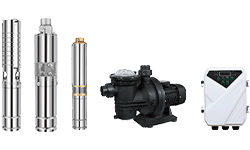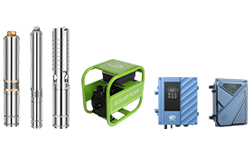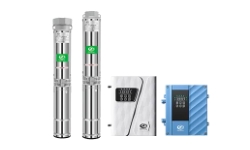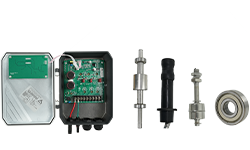Photovoltaic (PV) solar cooling
Photovoltaics can provide the power for any type of electrically powered cooling be it conventional compressor-based or adsorption/absorption-based, though the most common implementation is with compressors. For small residential and small commercial cooling (less than 5 MWh/a) PV-powered cooling has been the most frequently implemented solar cooling technology. The reason for this is debated, but commonly suggested reasons include incentive structuring, lack of residential-sized equipment for other solar-cooling technologies, the advent of more efficient electrical coolers, or ease of installation compared to other solar-cooling technologies (like radiant cooling).
Since PV cooling's cost effectiveness depends largely on the cooling equipment and given the poor efficiencies in electrical cooling methods until recently it has not been cost effective without subsidies. Using more efficient electrical cooling methods and allowing longer payback schedules is changing that scenario.
For example, a 100,000 BTU U.S. Energy Star rated air conditioner with a high seasonal energy efficiency ratio (SEER) of 14 requires around 7 kW of electric power for full cooling output on a hot day. This would require over a 20 kW solar photovoltaic electricity generation system with storage.
A solar-tracking 7 kW photovoltaic system would probably have an installed price well over $20,000 USD (with PV equipment prices currently falling at roughly 17% per year). Infrastructure, wiring, mounting, and NEC code costs may add up to an additional cost; for instance a 3120 watt solar panel grid tie system has a panel cost of $0.99/watt peak, but still costs ~$2.2/watt hour peak. Other systems of different capacity cost even more, let alone battery backup systems, which cost even more.
A more efficient air conditioning system would require a smaller, less-expensive photovoltaic system. A high-quality geothermal heat pump installation can have a SEER in the range of 20 (±). A 100,000 BTU SEER 20 air conditioner would require less than 5 kW while operating.
Newer and lower power technology including reverse inverter DC heat pumps can achieve SEER ratings up to 26.
There are new non-compressor-based electrical air conditioning systems with a SEER above 20 coming on the market. New versions of phase-change indirect evaporative coolers use nothing but a fan and a supply of water to cool buildings without adding extra interior humidity (such as at McCarran Airport Las Vegas Nevada). In dry arid climates with relative humidity below 45% (about 40% of the continental U.S.) indirect evaporative coolers can achieve a SEER above 20, and up to SEER 40. A 100,000 BTU indirect evaporative cooler would only need enough photovoltaic power for the circulation fan (plus a water supply).
A less-expensive partial-power photovoltaic system can reduce (but not eliminate) the monthly amount of electricity purchased from the power grid for air conditioning (and other uses). With American state government subsidies of $2.50 to $5.00 USD per photovoltaic watt,[3] the amortized cost of PV-generated electricity can be below $0.15 per kWh. This is currently cost effective in some areas where power company electricity is now $0.15 or more. Excess PV power generated when air conditioning is not required can be sold to the power grid in many locations, which can reduce (or eliminate) annual net electricity purchase requirement. (See Zero-energy building)
Superior energy efficiency can be designed into new construction (or retrofitted to existing buildings). Since the U.S. Department of Energy was created in 1977, their Weatherization Assistance Program[4] has reduced heating-and-cooling load on 5.5 million low-income affordable homes an average of 31%. A hundred million American buildings still need improved weatherization. Careless conventional construction practices are still producing inefficient new buildings that need weatherization when they are first occupied.
It is fairly simple to reduce the heating-and-cooling requirement for new construction by one half. This can often be done at no additional net cost, since there are cost savings for smaller air conditioning systems and other benefits.























